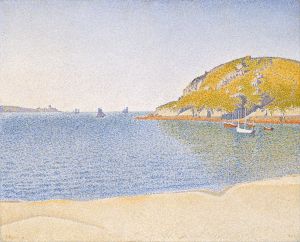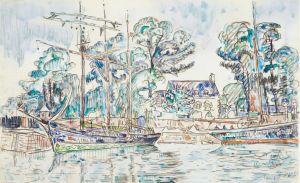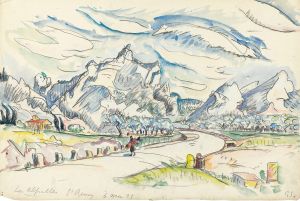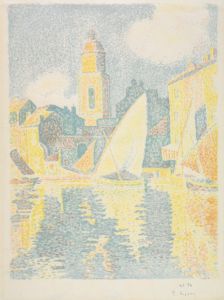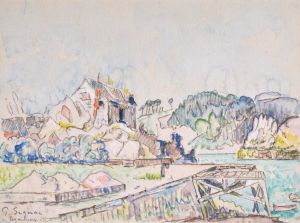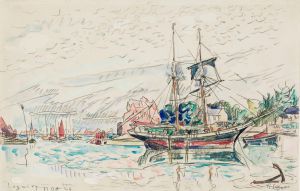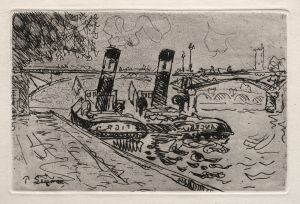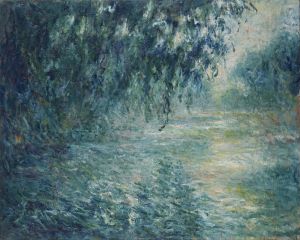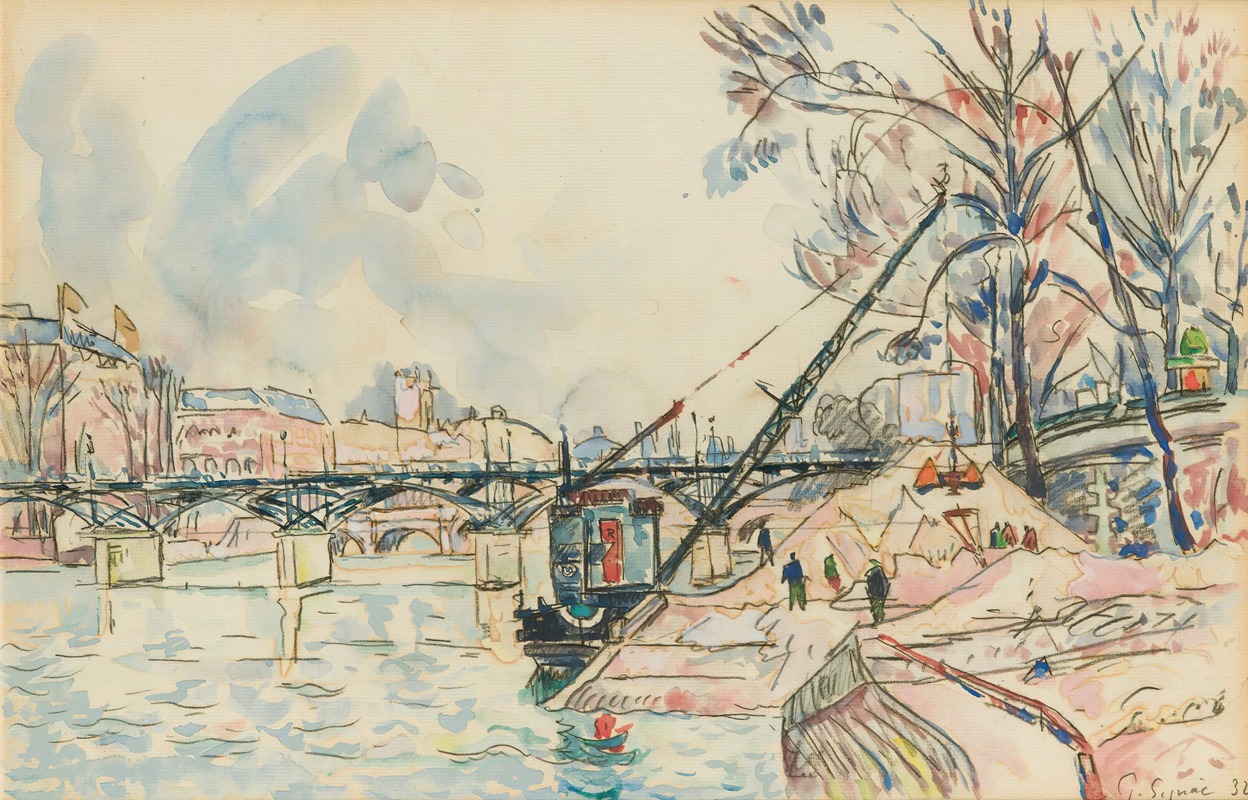
Paris, La Seine Au Pont Des Arts
A hand-painted replica of Paul Signac’s masterpiece Paris, La Seine Au Pont Des Arts, meticulously crafted by professional artists to capture the true essence of the original. Each piece is created with museum-quality canvas and rare mineral pigments, carefully painted by experienced artists with delicate brushstrokes and rich, layered colors to perfectly recreate the texture of the original artwork. Unlike machine-printed reproductions, this hand-painted version brings the painting to life, infused with the artist’s emotions and skill in every stroke. Whether for personal collection or home decoration, it instantly elevates the artistic atmosphere of any space.
"Paris, La Seine Au Pont Des Arts" is a painting by the French artist Paul Signac, a prominent figure in the Neo-Impressionist movement. Painted in 1925, this work exemplifies Signac's dedication to the technique of pointillism, a method characterized by the application of small, distinct dots of color that are applied in patterns to form an image. This technique was pioneered by Georges Seurat, with whom Signac worked closely and shared a deep artistic camaraderie.
Paul Signac was born in Paris in 1863 and initially pursued architecture before turning to painting. His artistic journey was significantly influenced by the Impressionists, but he soon became a leading advocate for Neo-Impressionism, a movement that sought to bring a more scientific approach to the Impressionist style. Signac's work is noted for its vibrant color palette and meticulous attention to the effects of light, both of which are evident in "Paris, La Seine Au Pont Des Arts."
The painting depicts a view of the Seine River in Paris, focusing on the Pont des Arts, a pedestrian bridge that connects the Institut de France and the central square of the Palais du Louvre. This location is a significant cultural and historical landmark in Paris, often frequented by artists and intellectuals. Signac's choice of this setting reflects his deep connection to Paris and its artistic heritage.
In "Paris, La Seine Au Pont Des Arts," Signac captures the essence of a bustling Parisian scene with his characteristic use of color and light. The painting is imbued with a sense of movement and life, as the shimmering waters of the Seine reflect the surrounding architecture and the sky above. Signac's use of pointillism allows for a dynamic interplay of colors, creating a vibrant and harmonious composition that invites viewers to experience the scene in a new and engaging way.
The painting is also notable for its compositional structure. Signac employs a balanced arrangement of elements, with the bridge serving as a central focal point. The surrounding buildings and the river are rendered with a sense of depth and perspective, drawing the viewer's eye across the canvas. This careful composition underscores Signac's mastery of the Neo-Impressionist technique and his ability to convey both the beauty and complexity of urban landscapes.
"Paris, La Seine Au Pont Des Arts" is housed in the Musée d'Orsay in Paris, a museum renowned for its extensive collection of Impressionist and Post-Impressionist masterpieces. The painting is an important part of Signac's oeuvre, showcasing his innovative approach to color and form, as well as his enduring fascination with the city of Paris.
Signac's work, including this painting, has had a lasting impact on the development of modern art. His exploration of color theory and his commitment to the principles of Neo-Impressionism influenced a generation of artists, including Henri Matisse and André Derain, who would go on to form the Fauvist movement. Through his art, Signac not only captured the vibrancy of Paris but also contributed to the broader dialogue about the role of color and technique in painting.
In summary, "Paris, La Seine Au Pont Des Arts" is a testament to Paul Signac's artistic vision and his ability to transform everyday scenes into extraordinary works of art through the innovative use of pointillism. The painting remains a celebrated piece within the canon of Neo-Impressionism, reflecting both the beauty of Paris and the enduring legacy of Signac's contributions to the art world.






